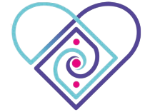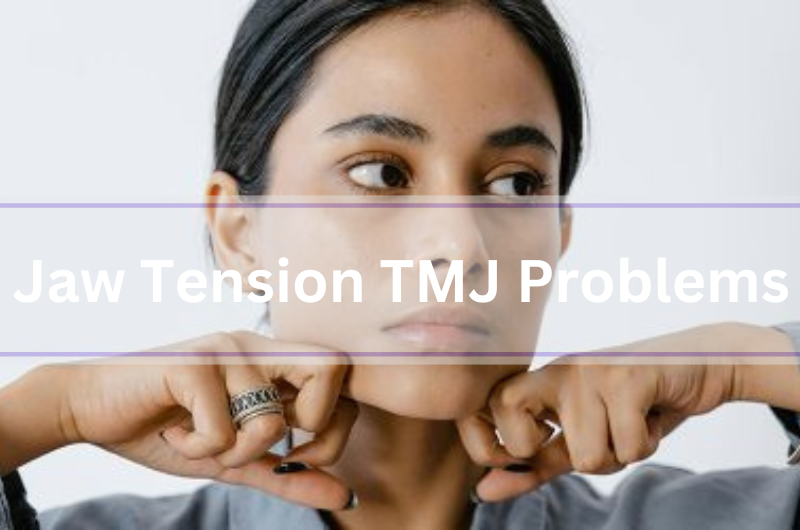Many people suffer with tension in the jaw joint for a variety of reasons and causing a variety of symptoms. The pain can be in the joint itself and in the muscles that control its movement as well as in surrounding areas. Problems with the jaw and muscles in the face that control it are called temporomandibular disorders (TMD). It can be temporary of last many years, affecting one or both sides of the face. More common in women than men and most common in the 20-40 age group.
The temporo-mandibular joint (TMJ) is the jaw joint in front of the ear, connecting the jawbone to the skull. The skull bone that contains the ear canal is called the temporal bone and the lower jawbone is called the mandible. TMJ is a sliding hinge joint that allows us to open and close our mouths and move them side to side so we can talk, chew and yawn. The joint contains cartilage and a small shock-absorbing disc, to aid normal smooth movement.
Anatomy: Muscles that close the jaw: masseter, temporalis and lateral (external) pterygoid. Muscles that open the jaw: medial (internal) pterygoid. Muscles involved in swallowing and elevating the hyoid bone: suprahyoid (above the hyoid bone) – geniohyoid, mylohyoid, stylohyoid and digastric. Ligaments: temporomandibular, stylomandibular and sphenomandibular.
Symptoms include pain or tenderness in the face, ear, around one or both jaw joint areas, neck and shoulders or a headache in the temples. Pain while chewing, difficulty chewing or locking of the jaw making it difficult to open or close your mouth. Ringing in the ears (tinnitus) may be related to TMD. Pain may be worse when chewing or feeling stressed and can disrupt sleep. Clicking, popping or grinding noises when you move your jaw may not necessarily include pain or limitation of movement.
Causes can be due to a number of reasons including arthritis, connective tissue disorders that may affect the joint, wear and tear of the joint or cartilage, whiplash and jaw injury, including a blow to the head or face and injury to the muscles; teeth clenching or grinding (bruxism), which can be due to stress and tension causing tightening of the facial and jaw muscles or from teeth not aligning correctly giving and uneven bite (malocclusion, requiring dental assistance); poor posture, excessive gum chewing and orthodontic braces. A long session in the dentist chair can cause temporary TMJ pain.
Diagnosis may be by a dentist, doctor, ear, nose and throat (ENT) specialist, an oral surgeon or a physical therapist. They will check for pain, tenderness, jaw movement and facial muscles as well as clicking on movement. X-rays or scans may be required to rule out other issues.
Treatment: Self Help includes eating soft food, take paracetamol or ibuprofen, hold ice packs or heat packs to the jaw, whichever feels better, massage the painful jaw muscles, try to find ways to relax; practice good posture.
Avoid chewing gum or pen tops, biting food with your front teeth, yawning too wide, biting your nails, clenching your teeth, except when eating, resting your chin on your hand. Dentist may recommend oral splints or mouth guards and work to correct your bite. Doctor (if pain persists or your jaw locks and you cannot eat or drink) they may suggest surgery or injections at the joint when other options fail.
Exercises and Stretches can help to ease tension in the jaw; it is also important to stretch the neck and shoulders. https://www.youtube.com/watch?v=j-eOz_nIZ0w shows some simple exercises for jaw pain. https://www.youtube.com/watch?v=jUIp4J6UXa8&t=56s shows more detailed neck stretches.
Osteopathic Treatment: Take a detailed case history to understand the nature of the problem and surrounding issues. Examine the neck, shoulders, jaw and spine and all surrounding tissues; muscles, ligaments, nerves, fascia, etc., for movement, strength and functionality and assess nerve pathways. Test jaw movements. Treat to reduce muscle tension, nerve irritation and soft tissue pain. Advice regarding specific exercise and stretching the neck and shoulders. Treatment may include gentle treatment of the entire cranium, perhaps internal mouth work where appropriate, manipulation, deep soft tissue massage, trigger point therapy, muscle energy techniques, fascial techniques, dry needling, etc.
We are happy to advise you on your health matters.
Lin Bridgeford DO KFRP MICAK MICRA FSCCO MSc
Registered Osteopath & Kinesiologist & Senior Yoga Teacher
Master Hypnosis and NLP Practitioner
Aether Bios Clinic
Saltdean
01273 309557 07710 227038
www.osteo-info.co.uk YouTube search Aether Bios OR Lin Bridgeford Instagram linbridgeford
https://linbridgeford.wordpress.com contains all my articles as blogs

